Best Fertilizers And Plant Food For Calla Lilies
Calla lilies are not heavy feeders but a balanced dose of nitrogen, phosphorus, and potassium can be good for the plant. In the initial days you may go for bulb specific and bloom boosting plant food and later stick to an all-purpose balanced one.
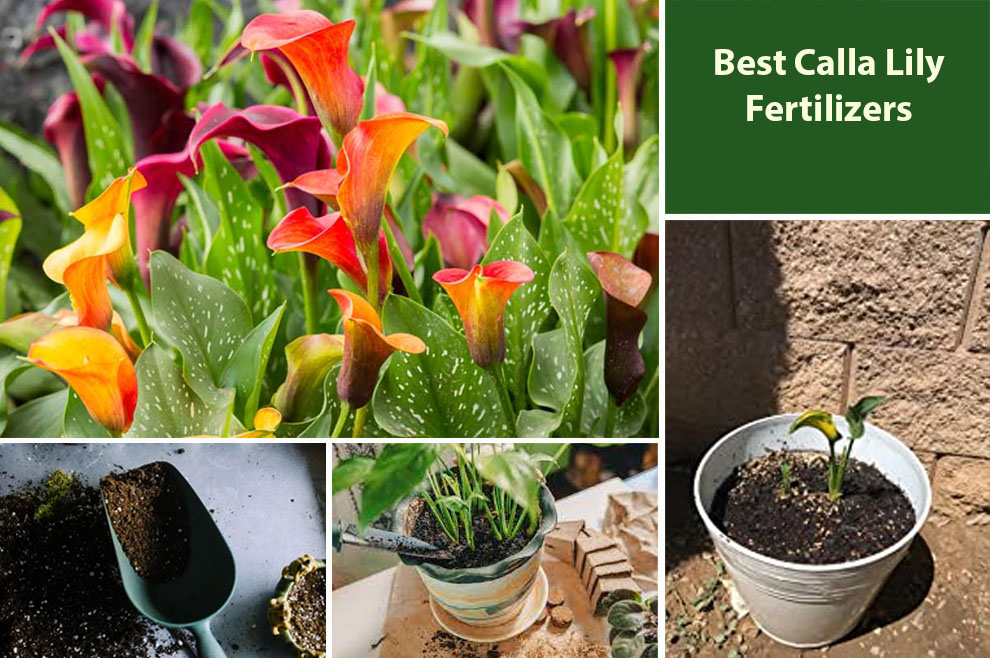
Scientifically called the Zantedeschia spp, Calla Lilies are elegant and beautiful blossoming plants renowned for their trumpet-shaped blooms.
If you have added them to your garden recently, you’d know how beautiful they look when in bloom very soon. For all the newbies and beginners, and of course our expert home gardeners, today we will closely look at the nutritional needs of calla lilies.
Choosing a suitable Calla Lily fertilizer is crucial to plants’ overall success. Overall when it comes to fertilizing Calla Lilies, a balanced, water-soluble fertilizer with moderate nitrogen (N), phosphorus (P), and potassium (K) is ideal.
But during the growing season, from spring to fall, you must feed the Calla Lilies every two to four weeks with plant food exquisitely formulated for flowering plants.
Alternatively, a general-purpose fertilizer with a 10-10-10 NPK can be beneficial throughout for later use. This best feed for Calla Lily would be one that helps foster prolific blooms and encourage foliage growth.
- Natural Feed for Calla Lilies – Espoma Rose-Tone Organic Fertilizer
- Best Water Soluble Fertilizer – Miracle-Gro
- Easy to Use – Miracle-Gro Food Spikes
- Best Indoor Plant Food For Calla Lily – Miracle-Gro Indoor Plant Food
Whichever fertilizer you choose, read the instructions on the packaging label for usage. Excessive plant food can damage the plant or result in foliage burn.
Further, supplement the soil with organic matter, like well-rotted manure or compost, to boost fertility and accentuate the overall health of the Calla Lilies.
What Must Plant Food For Calla Lily Have?
Calla Lilies demand a variety of vital nutrients to support their growth and development. These nutrients can be divided into three categories: Macronutrients, Secondary Nutrients, and Micronutrients.
1. Macronutrients: It is a mix of Nitrogen (N), Phosphorous (P), and Potassium (K). Nitrogen aids in promoting lush green leaves and foliage growth in Call Lilies. It also helps in chlorophyll and protein synthesis vital for photosynthesis.
Phosphorous helps in fruit production, flowering, and root development. It aids in energy transfer and stimulates overall plant growth.
Potassium contributes to overall health by involving disease resistance, accentuating flower quality, and regulating nutrient and water uptake.
2. Secondary nutrients: Calcium (Ca) aids in preventing diseases, strengthening cell walls, and promoting healthy growth in Calla Lilies. Magnesium (Mg) is a vital component of chlorophyll, enabling photosynthesis and accentuating leaf color.
Sulfur (S) enables the formation of vitamins, enzymes, and proteins. It helps in nutrient utilization and overall plant development.
3. Micronutrients: Micronutrients are imperative for Calla Lilies, but they need them in small quantities. However, they are equally necessary for their development and growth.
These include boron (B), copper (Cu), zinc (Zn), iron (Fe), molybdenum (Mo), manganese (Mn), and others. These micronutrients support different enzymatic reactions, boost chlorophyll production, and avoid nutrient deficiencies.
For optimal growth, it is vital to provide the blossoms with a well-balanced plant food that contains all these nutrients. Also, read here how to plant calla lilies.
Best Calla Lily Fertilizers
Here is a list of five of our most-recommended fertilizers for Calla Lilies, each of these plant foods provides the blossoms with unique benefits to support their growth and blooming potential.
1. Espoma Rose-Tone Organic Fertilizer
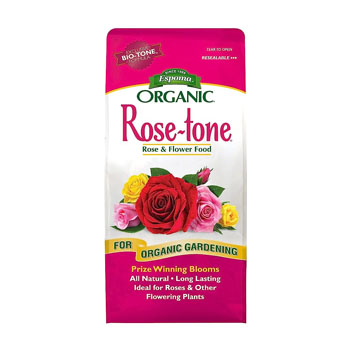 |
Check price on Amazon |
NPK: 4-3-2
Espoma Rose-Tone is a natural and organic fertilizer designed exquisitely for flowering plants like Calla Lily and Roses. It offers a balanced blend of vital nutrients for abundant blooms and healthy plant growth.
Beyond its macronutrients, Espoma has five percent calcium, which aids in strengthening cell walls and avoiding diseases. Its bio-tone formula contains beneficial microbes that boost soil health and helps with nutrient absorption.
Approved for organic gardening, Espoma plant food is made in the USA and guarantees a long-lasting, slow-release feeding to support the growth of its blooms.
2. Flower Food by EZ-gro
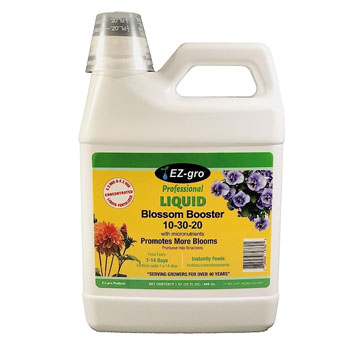 |
Check price on Amazon |
NPK: 10-30-20
It is a versatile plant food that can also be used as a Calla Lily fertilizer. It works well for indoor and outdoor plants. This plant food boosts bud set, resulting in vast and more abundant blooms.
You can use it for instant feeding, supplying the plants with crucial nutrients. With its phosphorous nutrient formulation, this Flower Food is beneficial during bud set periods.
Moreover, its nutrient content amplifies by the micronutrients that deliver the optimal nutrients, promoting beautiful and large blooms. You can use this comprehensive solution to maximize the blooming potential of your plants.
3. Miracle-Gro Water Soluble Fertilizer
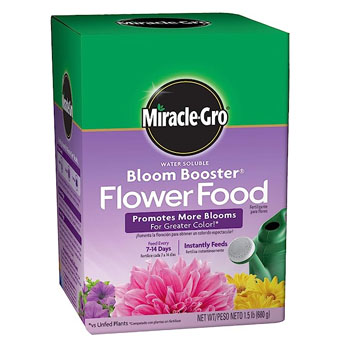 |
Check price on Amazon |
NPK: 15-30-15
It is the trusted best fertilizer for calla lily, day lily, roses or any other flowering plant. It can keep your plants blooming and nourished with its high phosphorous content.
This fertilizer can accentuate the bloom yield and color and ensure abundant and vibrant flowers. You can use this for in-growth and container plants, as it guarantees beautiful and quick results.
Flowering enthusiasts and experts recommend using it every seven to fourteen days during the growing season for optimal growth.
It is easy to use and compatible with a Miracle-Gro watering can or feeder.
4. Miracle-Gro Food Spikes – Easy to Use Calla Lily Food
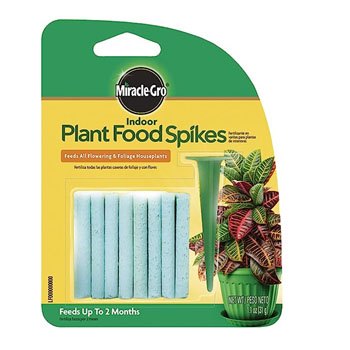 |
Check price on Amazon |
NPK: 6-12-6
Simplify the indoor plant care routine with this Miracle-Gro fertilizer spikes. These are easy to use and ideal for all indoor plants, including Calla Lilies. The spikes keep your plants fed continually for up to two months, offering them the vital micronutrients they need.
You can use it on all potted or indoor plants, and these spikes make providing indoor plants care so seamless. Insert the spikes into the moist soil, sit back, and watch your blooms thrive.
With this Miracle-Gro Indoor Food Spikes, growing healthy and vibrant indoor plants have been more effortless than ever.
5. BioAdvanced All-In-One Fertilizer
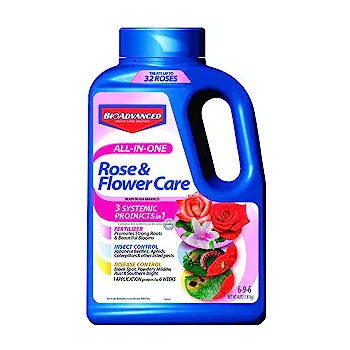 |
Check price on Amazon |
NPK: 6-9-6
This multi-purpose plant feed can also be used as a Calla Lily fertilizer. It can help accentuate your plants’ vitality. It promotes stunning blooms and ensures robust root growth.
In addition, it is also effective in insect control against pests like Leafminers, Aphids, and Japanese Beetles. Furthermore, it provides disease control against common flower ailments like Southern Blight, Rust, Powdery Mildew, and Black Spots.
It also guarantees systemic rainproof protection ensuring long-lasting defense for up to six weeks, treating up to thirty-two roses.
Your plants can thrive with beautiful blossoms and strengthened roots, and remain guarded against diseases and pests, courtesy of this fertilizer
Which Is The Best Indoor Plant Food For Calla Lily?
Miracle-Gro Indoor Plant Food is the best option for those growing their Calla Lilies indoors. It offers instant nourishment to the houseplants, ensuring they thrive. You can apply the formula directly to the soil or mix it with water for seamless application.
With its convenient, in-built pump, dispensing this fertilizer is quick and effortless. It has a 1-1-1 NPK ratio, and its balanced nutrient ratio aids healthy plant development.
Is Epsom Salt Good For Calla Lilies?
Epsom salt that has Magnesium sulfate can be beneficial for Calla Lilies. It offers the plants Magnesium, a secondary nutrient vital for healthy plant growth.
Adding Epsom Salt as a foliar spray or to the soil can accentuate color, boost chlorophyll production, and amplify the overall vitality of Calla Lilies.
Are Coffee Grounds Good For Calla Lilies?
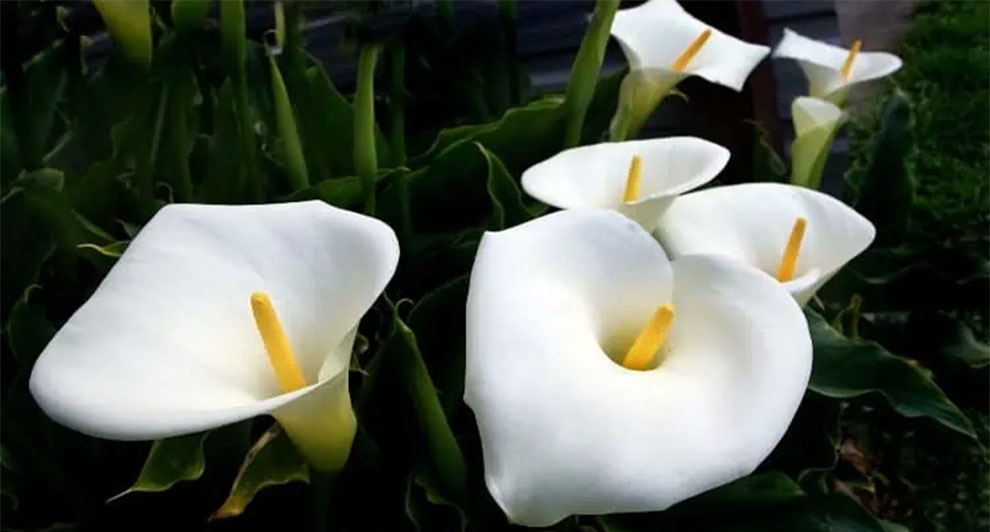
Coffee grounds can be good for Calla Lilies as they help better soil texture and drainage. They also have some nutrients, like potassium, nitrogen, and potassium, that contribute to overall plant health.
But excessive coffee grounds usage can make the soil too acidic. While it is an organic Calla Lily food, please use it in moderation and monitor soil pH levels.
How To Fertilize Calla Lilies?
Follow the guidelines below to fertilize Calla Lilies:
- Start feeding when new growth shows in spring and continue doing so every two to four weeks across the growing season.
- Water the plants before feeding to avoid root burn.
- Use a water-soluble, balanced fertilizer with an NPK 10-10-10. Dilute it per the packaging instructions and apply it at the plant’s base, avoiding direct contact with the leaves.
- Apply the recommended dosage based on the plant’s size and age.
- Supplement the soil with organic matter like well-rotted manure or compost to accentuate fertility.
- Do not overfeed, as excessive feeding can harm the plant. So, always follow the package instructions and do not use more than the recommended dosage.
Do Calla Lilies Need Fertilizers At The Time Of Planting?
Yes, Calla Lilies can benefit from the fertilizer application while planting it. Before planting, check the soil. After assessment use a balanced, slow-release fertilizer to provide the plant initial nutrients necessary for establishment and early growth.
You must opt for the best fertilizer for Calla Lily specially developed for bulbs or a general-purpose fertilizer with balanced NPK.
Follow the package instructions for the appropriate amount to apply based on the size and number of bulbs or rhizomes being planted. This initial fertilization helps give Calla Lilies a good start and supports their development in the early stages.
When To Fertilize Calla Lilies?
You can feed Calla Lilies during the active growing season. It is from spring to fall. You can start feeding when the new growth shows in spring and continue every two to four weeks after. This regular feeding schedule ensures a steady nutrient supply and supports healthy foliage and vibrant blooms.
How Often To Feed Calla Lilies?
Note that you must cease feeding once the plant enters dormancy during winter. In this period, the Calla Lilies are not growing actively. So, applying plant food can be detrimental to the plant.
Monitor the plant’s response to the fertilizer and adjust the frequency as required. Hence, you must lower the application concentration or frequency if your plant shows overfertilization signs, such as yellowing or burnt leaves.
It is best to follow the package instructions with the specific fertilizer used for accurate guidance on feeding frequency.
Signs That Your Calla Lily Needs Fertilizers
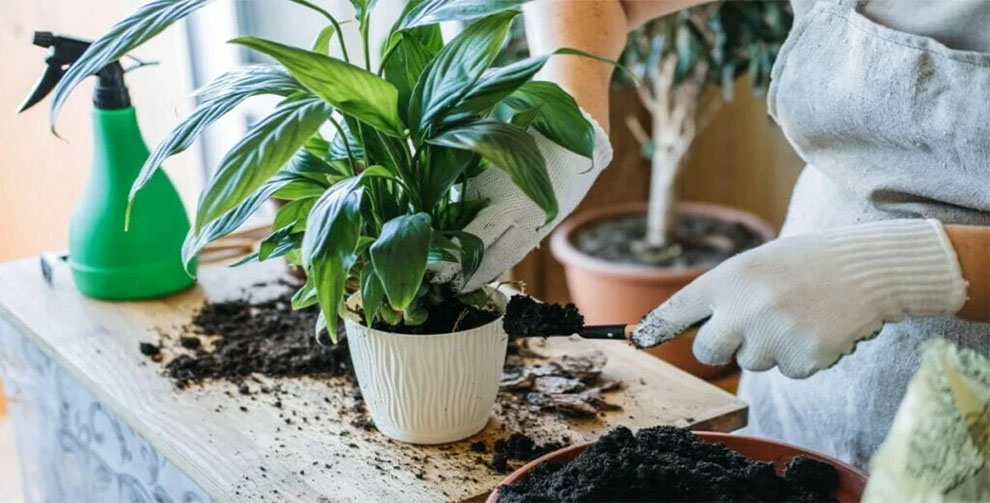
Some signs that your Calla Lily plant needs feeding are as follows:
- The plant is not growing as vigorously as usual or seems to be experiencing a slowdown or stunted growth. It could be because of a nutrient deficiency.
- Yellowing or pale leaves, typically in older foliage, can also infer nutrient deficiencies, especially iron or nitrogen.
- Insufficient nutrients impair the plant’s ability to produce vibrant and abundant blooms. So, if your Calla Lily is not blooming well or the flowers look less colorful or smaller than usual, it is a sign of nutrient deficiency.
- If the stems look spindly, thin, or weak, it is a symptom that your plant lacks the necessary nutrients.
- When you see an overall decline in the plant’s health, including increased susceptibility to diseases or pests, wilting, and reduced vigor, it could be a sign that the plant needs fertilization to replenish its nutrient levels.
Please note that these may also imply other issues like environmental stress or improper watering. Hence, you must assess the plant’s overall health and consider other factors before concluding that your Calla Lilies need fertilizing.
Factors To Consider While Choosing The Best Feed For Calla Lily
When picking the Calla Lilies fertilizers, you must account for several factors. These are vital for optimal plant health and growth. Here are the three such factors:
1. Assessing soil conditions and nutrient deficiencies: Conduct a soil test to identify the pH level and nutrient content of the soil.
2. NPK ratios and their significance for Calla Lilies: NPK ratios indicate the relative amounts of nitrogen (N), phosphorus (P), and potassium (K) in the fertilizer.
Calla Lilies generally benefit from a balanced fertilizer with equal or similar N-P-K ratios, such as 10-10-10 or 20-20-20. It ensures proper foliage growth, blooming, and overall plant health.
3. Considering slow-release or timed-release fertilizers: Slow-release or timed-release fertilizers provide a gradual and steady release of nutrients over an extended period.
These fertilizers are beneficial as they reduce the risk of overfeeding and ensure a consistent supply of nutrients to Calla Lilies.
